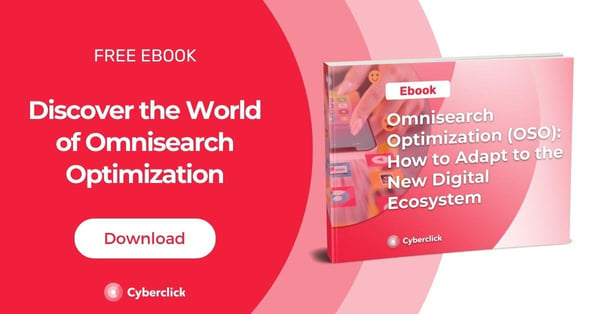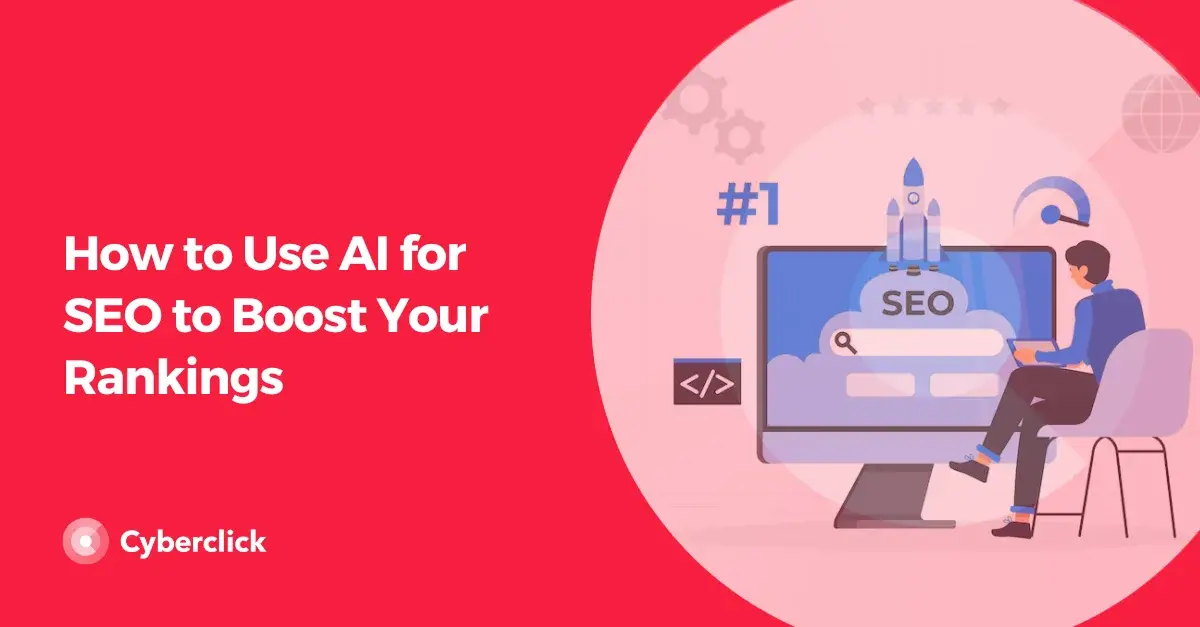Artificial intelligence is revolutionizing content ranking on Google. One of AI’s biggest impacts is its ability to improve search engines' interpretation of queries, delivering more relevant results. This means that SEO strategies need to evolve to align with the new selection and ranking parameters.
Let’s take a look at how AI is influencing SEO and how multichannel strategies can be leveraged to improve your business's online visibility.

What Is a Multichannel Content Strategy?
A multichannel content strategy focuses on creating and distributing content across various digital platforms—from traditional blogs to podcasts and social media platforms like Facebook, Instagram, X, YouTube, and TikTok. That being said, it’s not just about distributing content but tailoring it to each platform’s unique characteristics. For instance, a video for TikTok differs significantly from one made for YouTube.
The goal of a multichannel content strategy is to engage audiences in multiple ways, making way for a more dynamic and direct relationship. Taking advantage of the distinct features of each channel allows brands to reach more people and generate higher engagement.
Multichannel Content Strategy vs. Traditional SEO Strategy
Traditional SEO strategies focus on optimizing website content for search engines like Google. This includes keyword optimization, improving site structure, and obtaining backlinks to drive organic traffic.
The key difference is that traditional SEO prioritizes website ranking, while a multichannel strategy seeks to rank across multiple platforms and content formats—not just on a brand’s website.
Since users consume content in diverse ways across multiple platforms, content strategies must be both multichannel and multi-format. A message has more impact when adapted to different formats such as text, video, infographics, or audio, depending on the platform. This tailored approach maximizes reach and engagement by meeting users where they are.
How AI Is Transforming SEO
AI’s role in SEO can be analyzed from two perspectives:
-
AI-powered tools that function as search engines.
-
AI-optimized traditional search engines like Google.
AI Tools Functioning as Search Engines
AI tools like ChatGPT and DeepSeek are changing how users search for information online. These platforms provide highly accurate and conversational responses while also functioning as search engines (such as ChatGPT Search).

Instead of delivering direct answers, they offer links to sources, displaying excerpts of content to support their responses.
Thus, brands must optimize their content to be cited and ranked by these AI-driven platforms, making sure that their content is valuable and accessible in multiple formats across different channels.
Search Engines Now Powered by AI
Google has integrated AI to generate automated, direct answers in its search results pages (SERP). This Search Generative Experience (SGE) means Google no longer relies solely on keywords, but instead interprets the entire context of a query.
Search results now include direct zero-click answers, meaning users obtain information instantly without needing to visit a website.
This shift has significantly impacted web traffic, as fewer users click on links. Consequently, websites must adapt their content to these new formats, ensuring their information is concise, precise, and structured to be highlighted in search results. This requires implementing Generative Engine Optimization (GEO) strategies.
How User Behavior Is Changing
Users increasingly prefer fast, instant answers, which has fueled the rise of AI-powered tools like Google Assistant. These platforms provide direct responses instead of merely displaying search result links.
Additionally, social media is becoming a primary search tool, particularly on platforms like YouTube, Instagram, and TikTok. Many users search for products, services, or information via hashtags, posts, and videos rather than using Google.
Platforms like TikTok and Instagram have enhanced their search functions, making it easier to find relevant content instantly. This shift is redefining how brands approach SEO, requiring them to optimize for search engines beyond Google.
Omnisearch Optimization (OSO): The Future of Multichannel SEO
Cyberclick has introduced omnisearch optimization (OSO)—a natural evolution of SEO that integrates strategies for traditional search engines, generative search engines, and social media platforms.
Omnisearch recognizes that users no longer rely solely on Google. Instead, they turn to multiple tools and channels like TikTok, YouTube, ChatGPT, and Microsoft Copilot for information.
To implement OSO in your content strategy, you need to:
-
Optimize for generative search engines, making sure that AI tools can extract and cite your content.
-
Leverage social media as search engines by using detailed descriptions, relevant hashtags, and platform-native content formats.
-
Use structured data and enriched metadata to enhance indexation across multiple platforms.
OSO represents a shift from traditional SEO to a truly multichannel and multi-format approach, ensuring brands remain discoverable across various search experiences.
How to Transition from Traditional SEO to a Multichannel Strategy
To move from traditional keyword research to multichannel analysis, brands must recognize that keywords impact more than just websites—they influence all user touchpoints.
Steps to Adapt Your SEO Strategy
-
Analyze how keywords perform across multiple platforms—not just Google.
-
Learn about SEO for social media (Instagram, TikTok, YouTube, etc.).
-
-
Adjust content to fit each platform’s format and audience expectations.
-
Take advantage of each channel's strengths to improve the user experience and maximize visibility.
Example of a Multichannel Content Strategy
Let’s say you target the keyword "easy recipes":
-
For Google, publish a detailed SEO-optimized blog post with 10 recipes.
-
For YouTube, create a step-by-step video tutorial.
-
For Instagram, post a carousel with visually appealing quick steps.
-
For TikTok, share a 30-second fast-paced cooking clip.
Each platform requires a tailored approach. For instance:
-
Instagram prioritizes square images and vertical Reels.
-
YouTube works best with horizontal, long-form videos.
-
TikTok excels with short, engaging clips.
Maintaining message consistency across channels ensures brand recognition and credibility.
Advantages of a Multichannel Content Strategy
A multichannel strategy allows brands to connect with a broader and more diverse audience. Expanding across multiple platforms boosts accessibility and brand visibility, significantly impacting business growth.
Key Benefits
-
Increased Brand Visibility: Being present on blogs, YouTube, social media, and email marketing creates multiple touchpoints for users to discover your brand.
-
Stronger Brand Positioning: A consistent presence across channels builds brand awareness and credibility, reinforcing trust among consumers.
-
Business Scalability: A multichannel strategy enables brands to expand efficiently, reaching new markets while automating content distribution.
In Conclusion
AI is revolutionizing SEO, expanding content ranking beyond Google to multiple search experiences. Brands must adapt to this AI-driven landscape by implementing multichannel and multi-format strategies to remain visible across all digital touchpoints.
Would you like to optimize your SEO strategy for the new AI-driven era? Start integrating omnisearch optimization (OSO) to stay ahead of the competition!
Responsable de la estrategia de contenidos y visibilidad en Cyberclick, con enfoque Allbound y especialización en posicionamiento SEO, GEO y automatización con IA. Gestión avanzada del CRM con HubSpot: base de datos, workflows, lead nurturing, scoring y reporting. Experiencia en marketing digital, comunicación corporativa y periodismo, uniendo estrategia, creatividad y tecnología para captar y convertir leads cualificados.
Responsible for content and brand visibility strategy at Cyberclick, with an Allbound approach and specialization in SEO, GEO (Generative Engine Optimization), and AI-powered automation. Advanced HubSpot CRM management: database segmentation, workflows, lead nurturing, scoring, and reporting. Background in digital marketing, corporate communications, and journalism—combining strategy, creativity, and technology to attract and convert qualified leads.



.webp)


Leave your comment and join the conversation